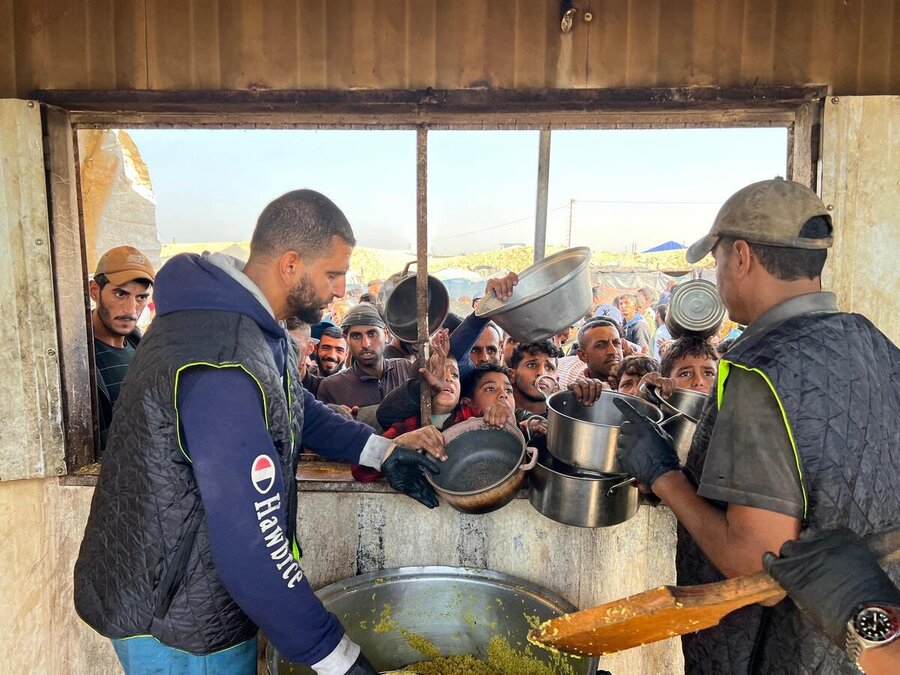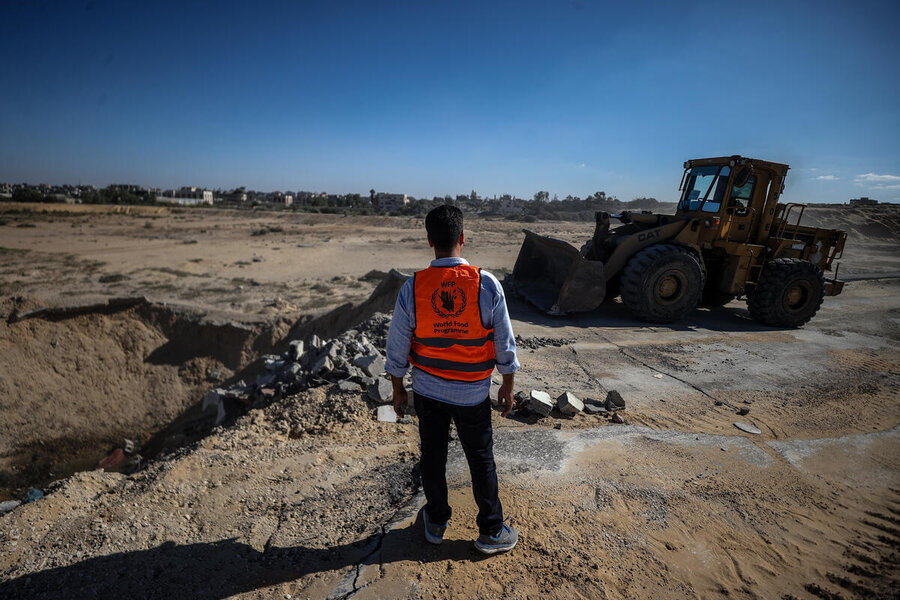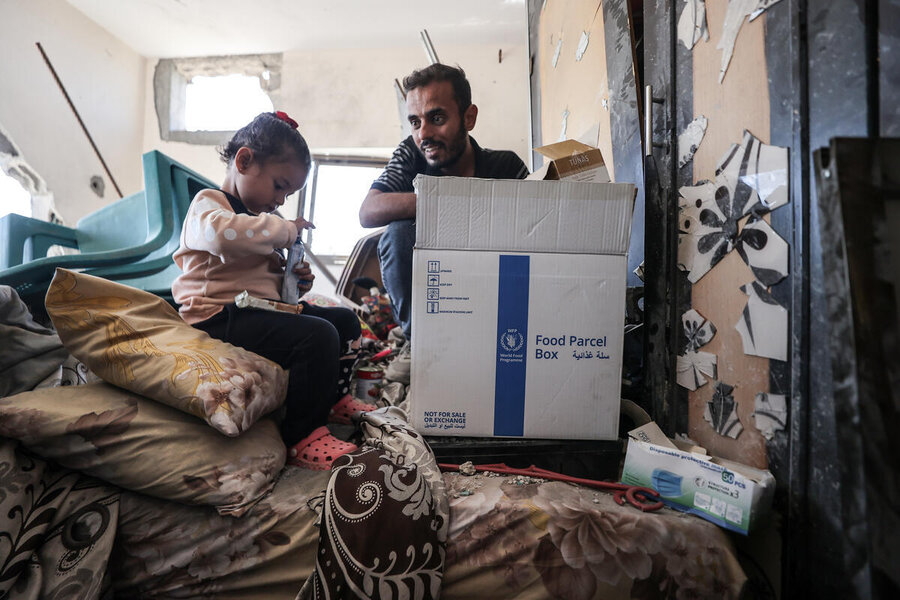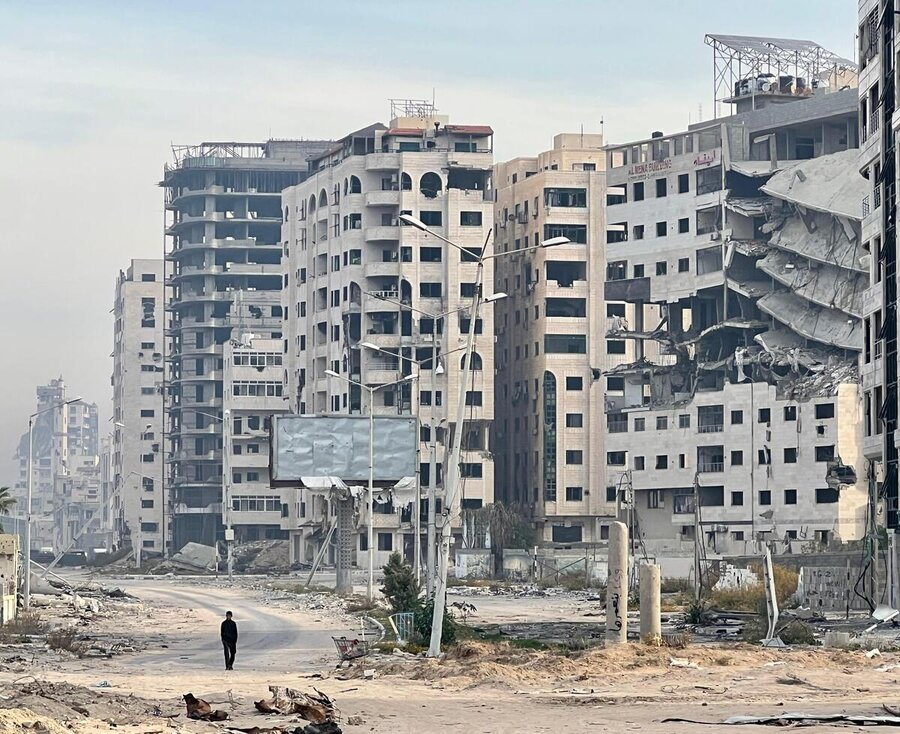Gaza ceasefire: WFP calls for sustained opening of humanitarian corridors
The World Food Programme welcomes the agreed ceasefire announced Wednesday (15 January). But a ceasefire is only the start – not the end – of what’s needed to reach desperate and hungry families in Gaza. WFP needs US$300 million to meet urgent needs in the enclave over the next six months.
- WFP calls on all parties to do what is in their power to halt any further fighting and ensure safe humanitarian access - the war has left more than 2 million people fully dependent on food assistance, homeless, and without any income.
- We need all border crossings open and functioning reliably. We also need humanitarian teams to be able to move freely and safely across Gaza to reach those in need.
- If these conditions are in place, WFP is ready to scale up and distribute lifesaving food for over a million people in Gaza.
- The needs in Gaza are immense. Recovery will require a full-scale humanitarian response with all agencies coming together, including UNRWA, to provide lifesaving assistance to 2 million people.


Humanitarian action
WFP has enough food pre-positioned along the borders and on its way to Gaza to feed over a million people for three months. UNRWA has enough supplies to support another million. For WFP, this includes food parcels, wheat flour, commodities for hot meals, and nutrition supplements.
- WFP is working to help revive what remains of Gaza’s economy. To support local shops and empower people with the freedom of choice, WFP plans to expand its cash and voucher assistance to 100,000 people (once commercial activity and cash liquidity allow).
- WFP will also support whatever factories remain, wheat flour mills, and shops that can resume operations.
- Using specialized teams, WFP has begun repairing and removing rubble from essential roads/key supply routes to allow for faster transportation of aid, on behalf of WFP and humanitarian partners.

To make a meaningful impact on the food security of people in Gaza, WFP needs the international community to scale up funding.
- WFP can send around 1,600 trucks of food (30,200 tons) each month to facilitate distributions for over 1 million people. In order to reach everyone in need, UNRWA’s support is critical. WFP is committed to bolstering UNRWA’s food assistance delivery efforts.
- Fast coordination and facilitation of movement into and across Gaza will also be critical, with free movement needed between the south and north of Gaza. All parties need to ensure the safe passage of aid and humanitarian staff across Gaza.
- Commercial flows to Gaza need to be restored and cash liquidity accessible for the population so they can buy fresh food and other basic necessities.
- Ceasefire conditions must be respected.

If commercial supplies of food and other goods are in place, and local banks have the liquidity needed, we will also provide cash to families so they can buy food and other essentials
- WFP’s goal is to provide immediate food aid and to support local food production, re-stock bakeries, and provide nutrition supplements for thousands of children.
- To reach people and make a meaningful impact, WFP also urgently need the international community’s support with funding, so we that can increase capacity and sustain our humanitarian staffing.
- Barely any food has gone into besieged North Gaza for more than two months. Winter cold and rain are further reducing people’s ability to survive.
- Food security in Gaza has been worsening, with people becoming weaker by the day; there is almost no fresh food (fruit, vegetables, meat, fish), shops are empty, bakeries have been unable to operate, lacking fuel, flour or both.
- The humanitarian response in Gaza has faced continuing challenges and setbacks. The disregard for international humanitarian principles has placed humanitarian staff, operations, and the people of Gaza at increasing risk.
- WFP and humanitarian partners call on all parties to uphold their obligations under international humanitarian law and allow for the safe passage of aid.

WFP operations update
- So far this year, WFP has only been able to reach 305,000 people in Gaza and 177,000 in the West Bank.
- With supplies inside Gaza severely strained, most of the people reached received hot meals, or significantly reduced rations.
- WFP distributed 34,683 ready-to-eat meals (RTEs) across Gaza, reaching 151,840 displaced people. Less than ten percent of the 1.675 million targeted population received assistance. In Gaza City, families received two food parcels.
- Hot meals were served from 62 kitchens to 250,000 displaced persons across Gaza.
- Due to supply shortages, no bakeries in southern and central Gaza have been operational for over a month. In Gaza City, five bakeries are open but have cut production by 50 percent due to fuel shortages, with remaining fuel expected to last only two to three days.
- In December, WFP dispatched over 14,000 metric tons of food into Gaza but faced challenges due to insecurity and looting, leading to depleted January stocks. To reach more people, WFP further reduced its rations, reaching 1.4 million people, but the majority received just one 25kg bag of wheat flour instead of the full ration of two food parcels and two bags of wheat flour.

Supply Chain
- Since the start of the crisis, WFP has delivered over 181,000 metric tons of food on 11,550 WFP trucks into Gaza.
In January so far, 166 trucks carrying 2,257 metric tons of food entered Gaza. - Currently, all three crossings into south and central Gaza (Kerem Shalom, Kissufim, and Gate 96) are open but with severely limited capacity due to insecurity, including armed looting and attacks on aid convoy routes. In the north, West Erez (Zikim) crossing is operational but can only be used to supply Gaza City. Access to North Gaza governorate has been consistently denied.
-
Around 80,000 tons of food is waiting outside Gaza or on its way into Gaza (Jordan, Egypt and Ashdod) – enough to feed over a million people for three months.
DONATE TO WFP PALESTINE EMERGENCY OPERATIONS



